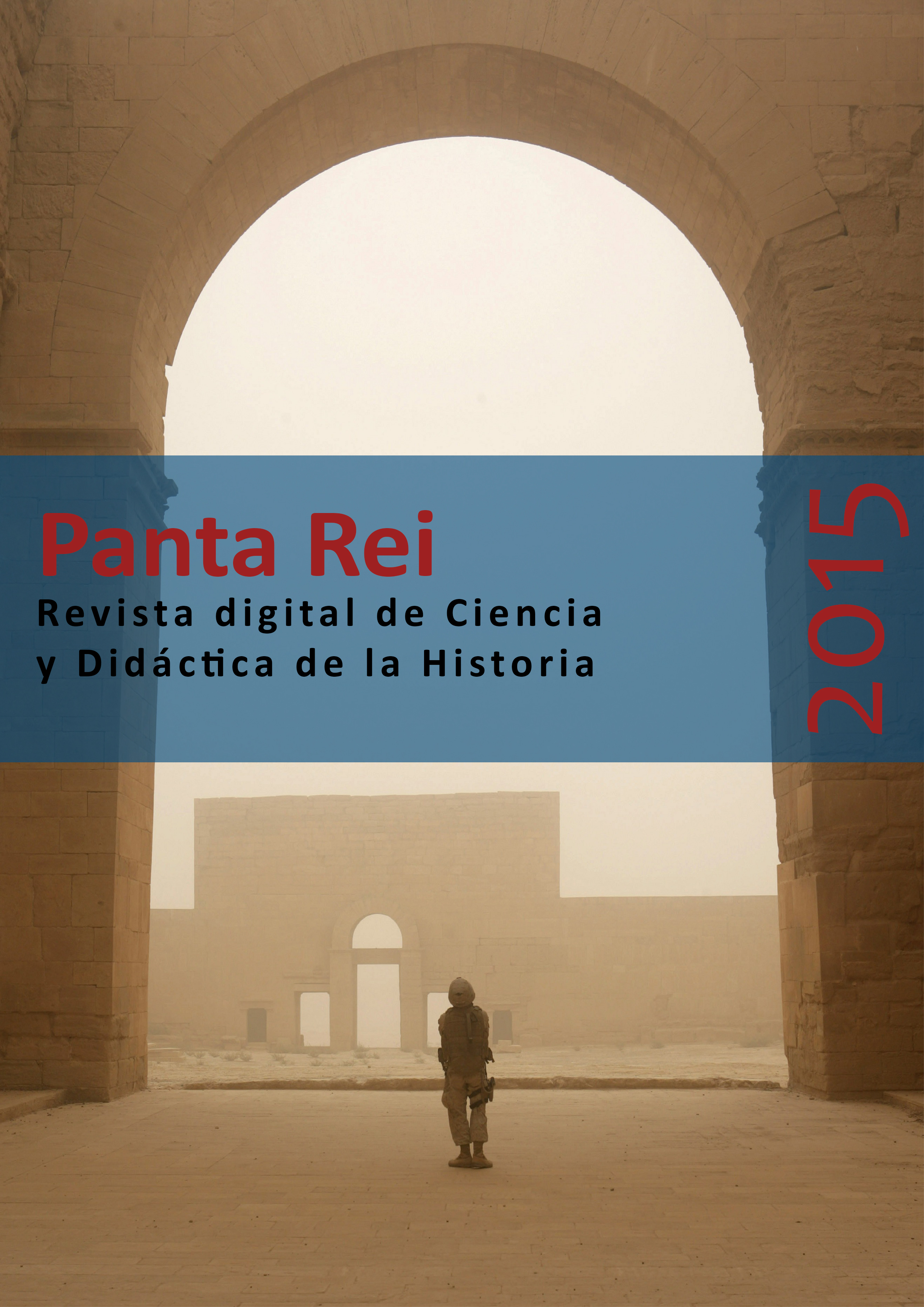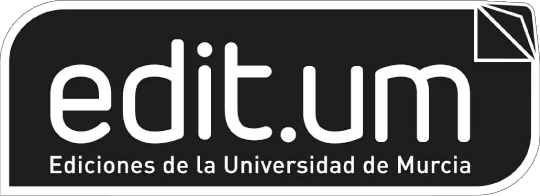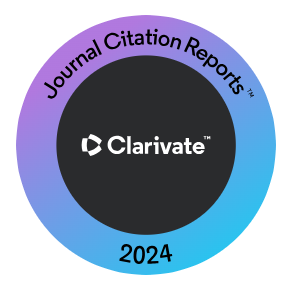Repensando las narrativas nacionales: Un análisis del origen, transmisión e influencia en el aprendizaje histórico
Resumen
El formato narrativo ocupa un papel central en el ámbito de la historia, tanto en la generación del conocimiento histórico como en su transmisión y aprendizaje. Sin duda, una de las narrativas más frecuentes y dominantes en el campo son las denominadas narrativas nacionales. Estas narrativas, frecuentemente basadas en mitos y leyendas, buscan principalmente celebrar el pasado nacional, dificultando en gran medida una comprensión crítica del mismo. El presente artículo pretende contribuir a comprender el papel que juegan estas narrativas nacionales en la producción y el consumo del conocimiento histórico a través de un análisis en diferentes ámbitos: el académico, el escolar y el ámbito informal. Finalmente, se presenta una reflexión sobre algunos de los estudios empíricos más recientes que analizan la influencia de estas narrativas nacionales en el aprendizaje de los estudiantes.
Descargas
-
Resumen790
-
PDF292
Citas
Alridge, D. P. (2006). The limits of master narratives in history textbooks: An analysis of representations of Martin Luther King, Jr. Teachers College Record, 108, 662-686.
Álvarez Junco, J. (2001). Mater dolorosa. La idea de España en el siglo XIX. Madrid: Santillana.
Anderson, B. (1983). Imagined communities: reflections on the origin and spread of nationalism. London: Verso.
Asensio, M. y Pol, E. (2012). From Identity Museums to Mentality Museums: Theoretical basis for history museums. En Carretero, M., Asensio, M. y Rodríguez-Moneo, M. (eds.), History Education and the Construction of National Identities (pp. 257-268). Charlotte CT: Information Age Publishing.
Aunión, J. A. (2012, 10 de Octubre). Wert quiere “españolizar” Cataluña. El País. Recuperado de http://sociedad.elpais.com
Balibar, E. (1991). The nation form: history and Ideology. En Wallerstein, I. y Balibar, E. (eds.), Race, Nation, Class: ambiguous identities (pp. 86-106). London: Verso.
Ballantyne, T. (2005). Putting the nation in its place?: World history and C. A. Bayly’s The birth of the modern world. In Curthoys, A. y Lake, M. (eds.), Connected Worlds: History in transnational perspective (pp. 23-44). Canberra: ANU E press.
Bartlett, F.C. (1932). Remembering: A study in experimental and social psychology. Cambridge: Cambridge University Press.
Barton, K. C. (2009). The denial of desire: How to make history education meaningless. En Symcox, L. y Wilschut, A. (eds.), International review of History education: National History Standars. The problem of the canon and the future of teaching History (pp. 265-282). Charlotte, NC.: Information Age Publishing.
Barton, K. C. y Levstik, L. (ed.). (2004). Teaching History for the Common Good. Mahwah, NJ: Lawrence Erlbaum Associates, Inc.
Barton, K. C. y McCully, A. W. (2005). History, Identity, and the School Curriculum in Northern Ireland: An Empirical Study of Secondary Students’ Ideas and Perspectives. Journal of Curriculum Studies, 37(1), 85-116.
Berger, S., Eriksonas, L. y Mycock, A. (eds.) (2011). Narrating the nation: Representations in History, Media and the Arts. New York: Berghahn Books.
Billig, M. (1995). Banal Nationalism. London: Sage.
Bruner, J. (1990). Acts of Meaning. Cambridge, MA: Harvard University Press.
Carretero, M. (2011) Constructing patriotism. Teaching of history and memories in global worlds. Charlotte, CT: Information Age Publishing.
Carretero, M. y Bermúdez, A. (2012). Constructing Histories. En Valsiner, J. (ed.), Oxford Handbook of Culture and Psychology (pp. 625-646). Oxford: Oxford University Press.
Carretero, M. y Kriger, M. (2006). La usina de la patria y la mente de los alumnos. Un estudio sobre las representaciones de las efemérides escolares argentinas. En Carretero, M., Rosa, A. y González, M. F. (eds.), Enseñanza de la Historia y Memoria colectiva (pp. 169-196). Buenos Aires: Paidós.
Carretero, M. y Kriger, M. (2008). Narrativas históricas y construcción de la identidad nacional: representaciones de alumnos argentinos sobre el “Descubrimiento” de América. Cultura y Educación, 20(2), 229-242.
Carretero, M. y Kriger, M. (2011). Historical representations and conflicts about indigenous people as national identities. Culture and Psychology, 17(2), 177-195.
Carretero, M., Jacott, L. y López-Manjón, A. (2002). Mexican and Spanish history textbooks. Do students learn the same story? Learning and Instruction, 12, 651-665.
Carretero, M. y López, C. (2010). The Narrative mediation on historical remembering. En Salvatore, S., Valsiner, J., Simon, J. T. y Gennaro, A. (eds.), Yearbook of Idiographic Science (Vol. 3) (pp. 285-294). Roma: Firera y Liuzzo.
Carretero, M., López, C., González, M. F. y Rodríguez-Moneo, M. (2012). Students historical narratives and concepts about the nation. En Carretero, M., Asensio, M. y Rodríguez-Moneo, M. (eds.), History Education and the Construction of National Identities (pp. 153-170). Charlotte CT: Information Age Publishing.
Carretero, M. y Montanero, M. (2008). Enseñanza y aprendizaje de la Historia: aspectos cognitivos y culturales. Cultura y Educación, 20(2), 133-143.
Carretero, M. y Van Alphen, F. (2014). Do Master Narratives Change Among High School Students? A Characterization of How National History Is Represented. Cognition and Instuction, 32(3), 290-312.
Connor, W. (2004). The timelessness of nations. Nations and Nationalism, 10, 35-47.
Cruz Prados, A. (2005). El nacionalismo, una ideología [Nationalism, an ideology]. Madrid: Tecnos.
Duara, P. (ed.). (1995). Rescuing History from the Nation: Questioning Narratives of Modern China. Chicago: University of Chicago Press.
Egan, K. (1997). The Educated Mind: How Cognitive Tools Shape Our Understanding. Chicago: The University of Chicago Press.
Finn, P. (2007, July 20). New manuals push a Putin’s-eye view in Russian schools. The Washington Post. Recuperado de http://www.washingtonpost.com
Foster, S. (2006). Whose History? Portrayal of immigrant groups in U.S. History textbooks, 1800-Present. En Foster, S. J. y Crawford, K. A. (eds.), What shall we tell the children? International perspectives on school history textbooks (pp 155-178). Greenwich, CT: Information Age Publishing.
Foster, S. (2012). Re-thinking historical textbooks in a globalised world. En Carretero, M., Asensio, M. y Rodríguez-Moneo, M. (eds.), History Education and the Construction of National Identities (pp. 49-62). Charlotte CT: Information Age Publishing.
Gellner, E. (1983). Nations and nationalism. New York: Cornell University Press.
González de Oleaga, M. (2012). Historical narratives in the colonial, national and ethnic museums of Argentina, Paraguay and Spain. En Carretero, M., Asensio, M. y Rodríguez-Moneo, M. (eds.) History education and the construction of national identities (pp. 239-255). Charlotte, NC: Information Age Publishing.
Grever, M. (2006). Nationale identiteit en historisch besef. De risico’s van een canon in de postmoderne samenleving [Identidad Nacional y Conciencia Histórica. Riesgos de un canon en una sociedad posmoderna]. Tijdschift voor Geschiedenis, 119, 160-177.
Grever, M. y Stuurman, S. (eds.) (2007). Beyond the Canon: History for the 21st century. London: Palgrave Macmillan.
Hobsbawm, E. (1997). Nations and Nationalism since 1780: programme, myth, reality. Cambridge: Cambridge University Press.
Hobsbawm, E. y Ranger, T. (eds.). (1983). The Invention of Tradition. Cambridge: Cambridge University.
Hsiao, Y. (2005). Taiwanese Students’ Understanding of Differences in History Textbook Accounts. En Ashby, R., Gordon, P. y Lee, P. (eds.), Understanding History. International review of History Education. Vol. IV (pp. 54-67). New York: Routledge.
Ichijo, A. y Uzelac, G. (eds.) (2005). When is the Nation? New York: Routledge.
Janmaat, J. G. (2005). Ethnic and Civic Conceptions of the Nation in Ukraine’s History Textbooks. European Education, 37(3), 20-37.
López, C. y Carretero, M. (2012). Identity construction and the goals of history education. En Carretero, M., Asensio, M. y Rodríguez-Moneo, M. (eds.), History education and the construction of national identities (pp. 139–150). Charlotte, NC: Information Age Publishing.
López, C., Carretero, M. y Rodríguez-Moneo, M. (2014a). Conquest or Reconquest? Students’ Conceptions of Nation Embedded in a Historical Narrative. Journal of the Learning Sciences, 24(2), 252-285.
López, C., Carretero, M. y Rodríguez-Moneo, M. (2014b). Telling a national narrative that is not your own. Does it enable critical historical consumption? Culture y Psychology, 20(4), 547–571.
Lorenz, C. (2011). Drawing the line: `Scientific´ history between Myth-making and Myth-breaking. En Berger, S., Eriksonas, L. y Mycock, A. (eds.), Narrating the nation: Representations in History, Media and the Arts (pp. 35-55). New York: Berghahn Books.
Mak, G. (2005). Gedoemd tot kwetsbaarheid [Doomed to vulnerability]. Amsterdam: Atlas.
Mandler, J. M. (1984). Stories, scripts and scenes: Aspects of schema theory. Hillsdale, NJ: Lawrence Erlbaum Associates.
Nakou, I. y Barca, I. (eds.) (2010). Contemporary public debates over history education. International Review of History Education Series. Charlotte, NC: Information Age Publishing.
Paxton, R. J. (1999). A Deafening Silence: History Textbooks and the Students Who Read Them. Review of Educational Research, 69(3), 315-339.
Pérez Garzón, J. S. (2001). Nación española y revolución liberal: la perspectiva historiográfica de los coetáneos [Spanish nation and liberal revolution: historiographical perspective of contemporary people]. En Forcadell, C.y Peiró, I. (eds.). Lecturas de la Historia: Nueve reflexiones sobre la Historia de la Historiografía (pp. 23-54). Zaragoza: Institución Fernando el Católico.
Renan, E. (1882). What is a Nation? En Bhabha, H. K. (1990) (ed.), Nation and Narration (pp. 8-22). Routledge: London.
Ríos Saloma, M. F. (2005). From the Restoration to the Reconquest: The construction of a national myth (An historiographical review. 16th -19th centuries). España medieval, 28, 379-414.
Ross, M. (1989). Relation of Implicit Theories to the Construction of Personal Histories. Psychological review, 96(2), 341-357.
Rüsen, J. (2004). Historical Consciousness: narrative structure, moral function, and ontogenetic development. En Seixas, P. (ed.), Theorizing historical consciousness (pp. 63-85). Toronto: University of Toronto Press.
Smith, A. D. (1991) National Identity. London: Penguin.
Symcox, L. y Wilschut, A. (2009). Introduction. En Symcox, L. y Wilschut, A. (eds.), National History Standars. The problem of the canon and the future of teaching History. International review of History education (Vol. 5. pp. 1-11). Charlotte, NC.: Information Age Publishing.
Valsiner, J. (2012). Monuments in our minds: Historical symbols as cultural tools. En Carretero, M., Asensio, M. y Rodríguez-Moneo, M. (eds.), History education and the construction of national identities (pp. 327–346). Charlotte, CT: Information Age Publishing.
Van der Leeuw-Roord, J. (ed.) (2004). History changes. Facts and figures about history education in Europe since 1989. The Hague: EUROCLIO.
Van der Leeuw-Roord, J. (2007). Two Steps Forward, One Step Back: Shoring Our Stories and Looking for the Common Threads. En Smart, D. (ed.), Making a Difference: Fifteen years of EUROCLIO (pp. 66-73). The Hague: EUROCLIO.
Van der Leeuw-Roord, J. (2009). Yearning for yesterday. Efforts of history professionals in Europe at designing meaningful and effective school History curricula. En Symcox, L. y Wilschut, A. (eds.), National History Standards. The problem of the canon and the future of teaching History. International review of History education (Vol. 5. pp. 73-94). Charlotte, NC.: Information Age Publishing.
VanSledright, B. (2008). Narratives of Nation-State, Historical Knowledge, and School History Education. Review of Research in Education, 32(1), 109-146.
Vasagar, J. (2012, November 24). Michael Gove accuses exam system of neglecting British history. The Guardian. Recuperado de http://www.guardian.co.uk
Von Borries, B. (2009). Competence of historical thinking, mastering of a historical framework, or knowledge of the historical canon? En Symcox, L. y Wilschut, A. (eds.), National history standards: the problem of the canon and the future of teaching history (pp.283-306). USA: Information Age Publishing.
Wallerstein, I. (1991). The construction of peoplehood: racism, nationalism, ethnicity. En Wallerstein, I. y Balibar, E. (eds.), Race, Nation, Class: ambiguous identities (pp. 71-85). London: Verso.
Wertsch, J. V. (2004). Specific narratives and Schematic narrative templates. En Seixas, P. (ed.), Theorizing historical consciousness (pp. 49-62). Toronto: University of Toronto Press.
Wineburg, S. (2001). Historical Thinking and Other Unnatural Acts. Philadelphia: Temple University Press.
Wineburg, S., Mosborg, S. y Porat, D. (2001). What Can Forrest Gump Tell Us about Students’ Historical Understanding? (motion picture). Social Education, 65(1), 55.
Wineburg, S., Mosborg, S., Porat, D., y Duncan, A. (2007). Common Belief and the Cultural Curriculum: An Intergenerational Study of Historical Consciousness. American Educational Research Journal, 44, 40-76.
Derechos de autor 2015 César López Rodríguez

Esta obra está bajo una licencia internacional Creative Commons Atribución-CompartirIgual 4.0.
Todos los contenidos publicados en nuestra revista están sujetos a una licencia Atribución 4.0 Internacional (CC BY-SA 4.0) de Creative Commons. Usted es libre de compartir (copiar y redistribuir el material en cualquier medio o formato) y adaptar (remezclar, transformar y crear a partir del material para cualquier finalidad, incluso comercial), bajo los siguientes términos:
Reconocimiento: Debe reconocer adecuadamente la autoría, proporcionar un enlace a la licencia e indicar si se han realizado cambios. Puede hacerlo de cualquier manera razonable, pero no de una manera que sugiera que tiene el apoyo del licenciador o lo recibe por el uso que hace.
CompartirIgual: Si remezcla, transforma o crea a partir del material, deberá difundir sus contribuciones bajo la misma licencia que el original.
El texto completo de la licencia se puede consultar en: Licencia Creative Commons













